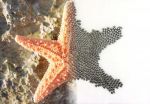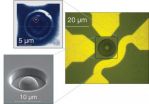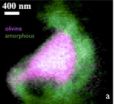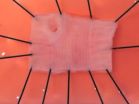(Press-News.org) There's now overwhelming evidence that a child's future health is influenced by more than just their parents' genetic material, and that children born of unhealthy parents will already be pre-programmed for greater risk of poor health, according to University of Adelaide researchers.
In a feature paper called "Parenting from before conception" published in today's issue of the top international journal Science, researchers at the University's Robinson Research Institute say environmental factors prior to conception have more influence on the child's future than previously thought.
"This really is a new frontier for reproductive and developmental research," says corresponding author and Director of the University's Robinson Research Institute, Professor Sarah Robertson.
"It's only been in the last 10 years that the science community has been seriously discussing these issues, and only in the last five years that we've begun to understand the mechanisms of how this is happening – with much of the work conducted right here at the University of Adelaide."
The paper concludes that parental influences on a child begin before conception, because stored environmental factors in the egg and sperm are contributing more than just genetic material to the child.
"Many things we do in the lead up to conceiving is having an impact on the future development of the child – from the age of the parents, to poor diet, obesity, smoking and many other factors, all of which influence environmental signals transmitted into the embryo," Professor Robertson says.
"People used to think that it didn't matter, because a child represented a new beginning, with a fresh start. The reality is, we can now say with great certainty that the child doesn't quite start from scratch – they already carry over a legacy of factors from their parents' experiences that can shape development in the fetus and after birth. Depending on the situation, we can give our children a burden before they've even started life."
This includes a higher risk of metabolic diseases, such as diabetes and cardiovascular disease. The likelihood of conditions like anxiety and immune dysfunction can also be affected.
Professor Robertson says current research is also showing that the fathers have a much greater role to play in this than previously thought.
Professor Robertson says this news is not all doom and gloom for would-be parents. "A few lifestyle changes by potential parents and improvements in the right direction, especially in the months leading up to conception, could have a lasting, positive benefit for the future of their child," she says.
INFORMATION:
Media contact:
Professor Sarah Robertson
Director, Robinson Research Institute
The University of Adelaide
Phone: (Tues, Thurs) +61 8 8313 8166
(Mon, Wed, Fri) +61 8 8313 4094
sarah.robertson@adelaide.edu.au
Message to parents: Babies don't 'start from scratch'
2014-08-14
ELSE PRESS RELEASES FROM THIS DATE:
A self-organizing thousand-robot swarm
2014-08-14
Cambridge, Mass. – August 14, 2014 – The first thousand-robot flash mob has assembled at Harvard University.
"Form a sea star shape," directs a computer scientist, sending the command to 1,024 little bots simultaneously via an infrared light. The robots begin to blink at one another and then gradually arrange themselves into a five-pointed star. "Now form the letter K."
The 'K' stands for Kilobots, the name given to these extremely simple robots, each just a few centimeters across, standing on three pin-like legs. Instead of one highly-complex robot, a "kilo" of robots ...
Molecular engineers record an electron's quantum behavior
2014-08-14
A team of researchers led by the University of Chicago has developed a technique to record the quantum mechanical behavior of an individual electron contained within a nanoscale defect in diamond. Their technique uses ultrafast pulses of laser light both to control the defect's entire quantum state and observe how that single electron state changes over time. The work appears in this week's online Science Express and will be published in print later this month in Science.
This research contributes to the emerging science of quantum information processing, which demands ...
Mysteries of space dust revealed
2014-08-14
The first analysis of space dust collected by a special collector onboard NASA's Stardust mission and sent back to Earth for study in 2006 suggests the tiny specks, which likely originated from beyond our solar system, are more complex in composition and structure than previously imagined.
The analysis, completed at a number of facilities including the U.S. Department of Energy's Lawrence Berkeley National Lab (Berkeley Lab) opens a door to studying the origins of the solar system and possibly the origin of life itself.
"Fundamentally, the solar system and everything ...
New Milky Way maps help solve stubborn interstellar material mystery
2014-08-14
An international team of sky scholars, including a key researcher from Johns Hopkins, has produced new maps of the material located between the stars in the Milky Way. The results should move astronomers closer to cracking a stardust puzzle that has vexed them for nearly a century.
The maps and an accompanying journal article appear in the Aug. 15 issue of the journal Science. The researchers say their work demonstrates a new way of uncovering the location and eventually the composition of the interstellar medium—the material found in the vast expanse between star systems ...
CF mucus defect present at birth
2014-08-14
VIDEO:
This is a 3-D reconstruction from time-lapse CT-scans of a CF pig lung. Images show the trachea and bronchi. Colored round dots represent positions of particles that were...
Click here for more information.
Mucus is key to keeping our lungs clean and clear of bacteria, viruses, and other foreign particles that can cause infection and inflammation. When we inhale microbes and dust, they are trapped in the mucus and then swept up and out of the lungs via a process called ...
Potential drug therapy for kidney stones identified in mouse study
2014-08-14
Anyone who has suffered from kidney stones is keenly aware of the lack of drugs to treat the condition, which often causes excruciating pain.
A new mouse study, however, suggests that a class of drugs approved to treat leukemia and epilepsy also may be effective against kidney stones, researchers at Washington University School of Medicine in St. Louis report.
The drugs are histone deacetylase inhibitors, or HDAC inhibitors for short. The researchers found that two of them — Vorinostat and trichostatin A — lower levels of calcium and magnesium in the urine. Both calcium ...
Broader organ sharing won't harm liver transplant recipients
2014-08-14
New research shows that broader sharing of deceased donor livers will not significantly increase cold ischemia time (CIT)—the time the liver is in a cooled state outside the donor suggesting that this is not a barrier to broader sharing of organs. However, findings published in Liver Transplantation, a journal of the American Association for the Study of Liver Diseases and the International Liver Transplantation Society, do indicate that broader sharing of organs will significantly increase the percentage of donor organs that are transported by flying rather than driving. ...
Scientists study 'talking' turtles in Brazilian Amazon
2014-08-14
AUDIO:
These are vocalizations made between adults and hatchlings (individual sounds repeated for the listener's benefit).
Click here for more information.
Turtles are well known for their longevity and protective shells, but it turns out these reptiles use sound to stick together and care for young, according to the Wildlife Conservation Society and other organizations.
Scientists working in the Brazilian Amazon have found that Giant South American river turtles actually ...
Scientists fold RNA origami from a single strand
2014-08-14
RNA origami is a new method for organizing molecules on the nanoscale. Using just a single strand of RNA, many complicated shapes can be fabricated by this technique. Unlike existing methods for folding DNA molecules, RNA origamis are produced by enzymes and they simultaneously fold into pre-designed shapes. These features may allow designer RNA structures to be grown within living cells and used to organize cellular enzymes into biochemical factories. The method, which was developed by researchers from Aarhus University (Denmark) and California Institute of Technology ...
New analysis links tree height to climate
2014-08-14
MADISON, Wis. — What limits the height of trees? Is it the fraction of their photosynthetic energy they devote to productive new leaves? Or is it their ability to hoist water hundreds of feet into the air, supplying the green, solar-powered sugar factories in those leaves?
Both factors — resource allocation and hydraulic limitation — might play a role, and a scientific debate has arisen as to which factor (or what combination) actually sets maximum tree height, and how their relative importance varies in different parts of the world.
In research to be published in ...






